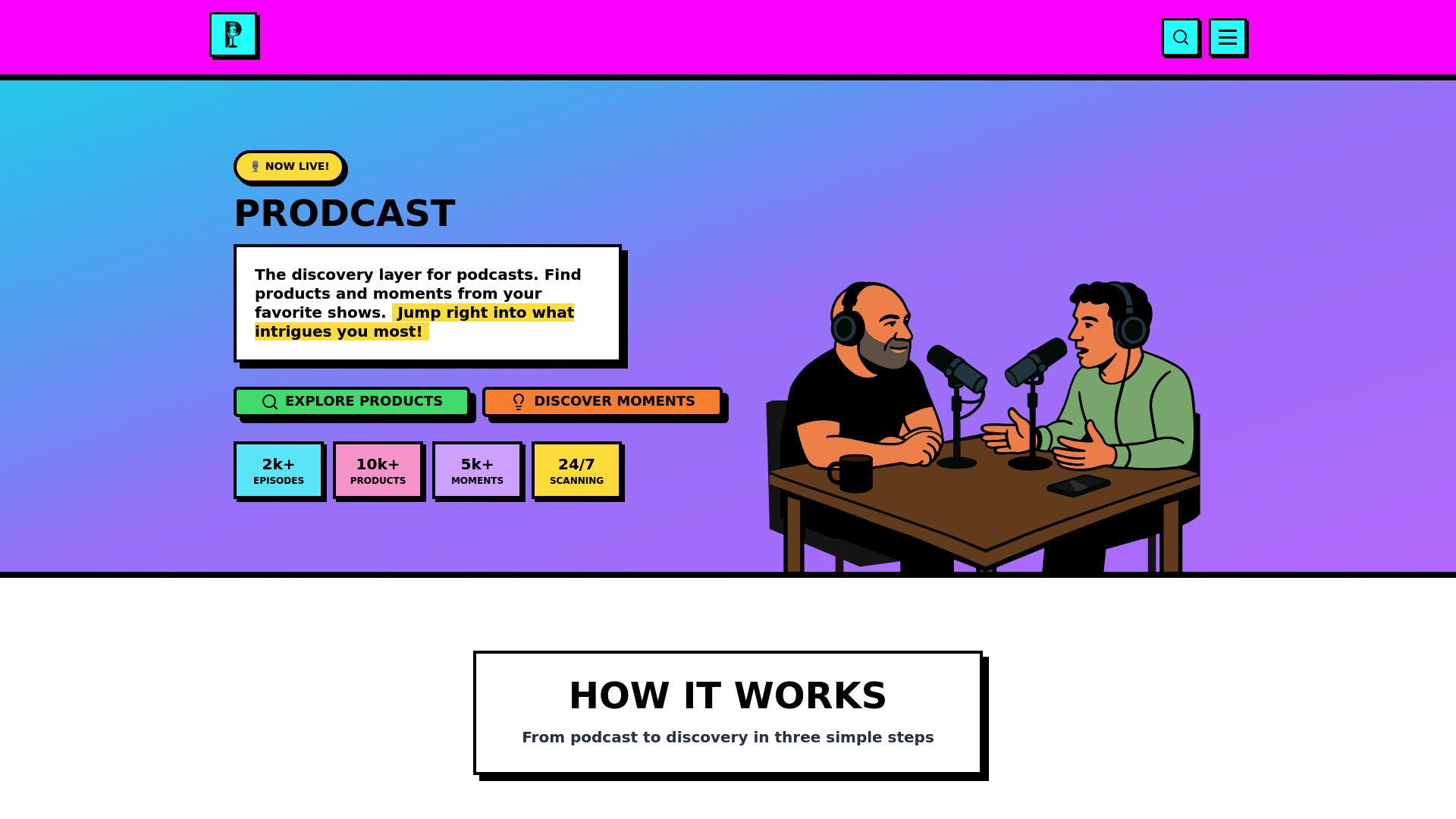CATEGORIES
TAGS
Podcast Data Analysis: Complete Guide for 2025

Over 464 million people worldwide listen to podcasts each month, turning audio shows into a huge source of data. Understanding how listeners interact with episodes offers more than basic download counts. With advanced methods like semantic segmentation and machine learning, platforms can break podcasts into meaningful sections that reveal audience interests and habits. These technologies open the door to deeper insights, smarter recommendations, and a personalized listening experience for every user.
Key Takeaways
| Point | Details |
|---|---|
| Podcast Data Analysis | Utilizes AI and machine learning to convert unstructured audio into structured, insightful data, enhancing user engagement and content navigation. |
| Behavioral Insights | Capturing detailed audience interaction patterns helps in understanding preferences and improving content targeting for better marketing strategies. |
| AI in Moment Detection | Advanced AI models identify significant audio segments, allowing for nuanced content creation and enhancing audience connection through targeted recommendations. |
| Privacy Considerations | Navigating legal and ethical challenges in data collection is crucial; platforms must prioritize user consent and transparency to protect individual rights. |
Table of Contents
- Defining Podcast Data Analysis Methods
- Types of Podcast Data and Insights
- How AI Identifies Key Moments and Mentions
- Podcast Analytics for Brands and Retail Integration
- Risks, Privacy, and Legal Considerations
Defining Podcast Data Analysis Methods
Podcast data analysis represents a cutting-edge approach to understanding audio content through advanced computational techniques. At its core, the method transforms unstructured spoken audio into structured, analyzable data by leveraging sophisticated machine learning algorithms. Semantic segmentation emerges as a critical technique, allowing researchers and platforms to break down long podcast episodes into meaningful, digestible segments.
According to research from the PODTILE project, transformer-based encoder-decoder models can automatically segment podcast transcripts into semantically coherent chapters. This breakthrough enables more precise content navigation and retrieval. Key capabilities of modern podcast data analysis include:
Here’s a comparison of key podcast data analysis methods and their capabilities:
| Methodology | Description | Primary Capabilities |
|---|---|---|
| Semantic Segmentation | Divides episodes into coherent segments | Content navigation Topic mapping |
| Highlight Detection | Identifies significant moments in audio | Key moment detection Listener engagement |
| Transformer Models | Uses AI to analyze transcripts and audio structure | Auto-chaptering Contextual shift detection |
| Behavioral Analytics | Tracks how audiences interact with content | Replay analysis Attention span measurement |
- Automatic transcript generation
- Semantic content mapping
- Listener behavior tracking
- Highlight and key moment detection
The Rhapsody dataset introduces an innovative approach to podcast highlight detection, demonstrating how machine learning models can identify significant episode moments. By analyzing both audio features and transcripts, these models can predict listener engagement with remarkable accuracy.
 Research from the Rhapsody project shows that fine-tuned models significantly outperform traditional zero-shot approaches, marking a substantial advancement in podcast content understanding.
Research from the Rhapsody project shows that fine-tuned models significantly outperform traditional zero-shot approaches, marking a substantial advancement in podcast content understanding.
Ultimately, podcast data analysis transforms passive listening into an interactive, data-driven experience. By breaking down audio content into analyzable components, platforms can provide deeper insights, more personalized recommendations, and enhanced user engagement.
Types of Podcast Data and Insights
Podcast data encompasses a rich ecosystem of insights that go far beyond simple listener numbers. Behavioral data represents the most dynamic and revealing category, tracking how audiences interact with audio content in real-time. From replay patterns to engagement metrics, these insights provide a nuanced understanding of podcast consumption.
Understanding podcast analytics reveals multiple data dimensions. According to research from the Rhapsody dataset, user behavior can be mapped through specific interaction points, particularly highlighting ‘most replayed’ segments. Key podcast data types include:
- Listener Demographics: Age, location, interests
- Engagement Metrics: Listen duration, replay frequency
- Content Structure: Episode segmentation, topic transitions
- Behavioral Patterns: Replay moments, attention span
The PODTILE research demonstrates how auto-generated chapters can transform raw audio into structured insights. Research from PODTILE shows that computational analysis can reveal intricate patterns within podcast transcripts, such as thematic transitions and key discussion segments. This approach enables platforms to understand not just what content exists, but how listeners actually consume and interact with that content.
Ultimately, podcast data insights provide a powerful lens into audience preferences, helping creators and brands craft more targeted, engaging audio experiences. By understanding the nuanced ways listeners interact with content, we can create more compelling and personalized podcast ecosystems.
![]()
How AI Identifies Key Moments and Mentions
Artificial Intelligence has revolutionized podcast content analysis by developing sophisticated methods to pinpoint and extract the most significant audio segments. Moment detection represents a complex computational process that transforms unstructured audio into precisely mapped insights, enabling unprecedented understanding of podcast content.
Research from the Rhapsody dataset frames highlight detection as a segment-level classification challenge, leveraging both speech signals and transcript analysis. The AI employs advanced machine learning techniques to identify pivotal moments by analyzing:
- Speech tone variations
- Listener replay frequencies
- Contextual linguistic patterns
- Semantic content shifts
- Emotional engagement indicators
According to PODTILE’s transformer research, AI models can now automatically predict chapter boundaries and titles by examining transcript content and global context. This breakthrough allows computational systems to detect structural and thematic shifts that mark key moments with remarkable precision. The models can distinguish nuanced transitions that human listeners might overlook, effectively creating a granular map of podcast content.
Ultimately, AI-powered moment identification transforms passive listening into an interactive, data-driven experience. By breaking down audio content into analyzable components, these intelligent systems provide creators and listeners with deeper insights, enabling more targeted content creation and more personalized consumption experiences.
Podcast Analytics for Brands and Retail Integration
Podcast analytics have transformed from passive listening metrics into powerful strategic tools for brands seeking direct consumer engagement. Retail integration represents a groundbreaking approach where podcast data becomes a direct revenue generation mechanism, bridging the gap between audio content and consumer purchasing behavior.
Podcast data analytics can boost shopping and brand sales by providing unprecedented insights into listener preferences and behaviors. Key strategic advantages for brands include:
- Precise Audience Targeting: Understanding listener demographics
- Product Placement Optimization: Tracking mention effectiveness
- Conversion Tracking: Measuring direct sales from podcast mentions
- Real-time Consumer Insights: Capturing immediate audience reactions
Retail brands can leverage podcast analytics to create hyper-personalized marketing strategies. By analyzing listener engagement, brands can identify precise moments when product recommendations are most likely to resonate. Podcast Engagement Metrics reveal how specific mentions, contextual placement, and host credibility dramatically influence consumer purchasing decisions.
Ultimately, podcast analytics represent more than data collection—they’re a strategic pathway for brands to transform passive listening into active consumer engagement. By understanding the nuanced relationship between podcast content and listener behavior, retailers can create more targeted, effective marketing approaches that feel organic and genuinely valuable to their audience.
Risks, Privacy, and Legal Considerations
Podcast data analytics operates in a complex landscape where technological innovation constantly challenges existing privacy frameworks. Data privacy has emerged as a critical concern, with podcast platforms navigating increasingly sophisticated legal and ethical boundaries around user information collection and analysis.
Our comprehensive privacy policy reflects the evolving regulatory environment. According to the proposed American Privacy Rights Act, companies must now implement robust user protection mechanisms, including:
- Explicit user consent requirements
- Clear data collection disclosure
- Mandatory opt-out mechanisms
- User data access and deletion rights
- Transparent data usage policies
The mosaic effect introduces another critical privacy dimension, demonstrating how seemingly innocuous data fragments can expose sensitive personal information when aggregated. This phenomenon means that even anonymized podcast listening patterns could potentially reconstruct detailed user profiles, raising significant ethical questions about data handling and individual privacy protection.
Navigating these complex legal and ethical terrains requires a proactive, transparent approach. Podcast platforms must continuously balance the powerful insights derived from data analytics with rigorous user privacy protections, ensuring that technological innovation never compromises individual rights and personal data sovereignty.
Transform Podcast Data Into Real Influence With Prodcast
Unlock the real value behind every podcast episode. If you are ready to move beyond surface-level analytics and truly understand your audience’s behavior, semantic segmentation, and product engagement, it is time for a smarter approach. The latest advances in AI-powered podcast data analysis—like those described in our article—are no longer out of reach. Now, you can turn data into action and passive moments into measurable engagement and sales.

Experience how Prodcast leverages Gemini LLM technology to categorize highlights, detect product mentions, and give listeners a fast track to discover and purchase, all within a seamless shopping journey. Empower your brand or product by becoming a vendor or bidding on keywords that connect you to the right listener at the right moment. Looking for a deeper dive into the latest podcast analytics? Visit our Podcast Engagement Metrics guide and start transforming your podcast strategy today. Don’t just watch the landscape change around you—make your move now and turn every podcast moment into a business opportunity. Explore the power of next-generation data insights at Prodcast’s homepage.
Frequently Asked Questions
What are the main methods used in podcast data analysis?
Podcast data analysis employs several key methods, including semantic segmentation, highlight detection, transformer models, and behavioral analytics. These techniques help break down audio content into structured, analyzable data, enhancing content navigation and user engagement.
How can AI improve podcast content analysis?
AI significantly enhances podcast content analysis through moment detection, which identifies important segments by analyzing speech tones, listener behavior, and contextual shifts in the transcript. This allows for automatic chaptering and in-depth insights into listener engagement.
What types of data do podcast analytics provide?
Podcast analytics offer various data types, such as listener demographics, engagement metrics, content structure, and behavioral patterns. These insights help creators understand audience preferences and optimize their content for better engagement.
Why is data privacy important in podcast analytics?
Data privacy is crucial in podcast analytics due to the increasing scrutiny over user information collection. It raises ethical questions about how data is handled, requiring platforms to implement user consent, transparency, and robust privacy protections to safeguard individual rights.
Recommended
- Understanding Podcast Analytics: What They Mean and Why | Prodcast
- How to Increase Downloads: Boost Your Podcast Reach | Prodcast
- Podcast Data Analytics: Boost Shopping and Brand Sales in… | Prodcast
- Understanding Podcast Listener Demographics for Brands | Prodcast
- Website Traffic Analysis for 2025: Boost Growth and ROI